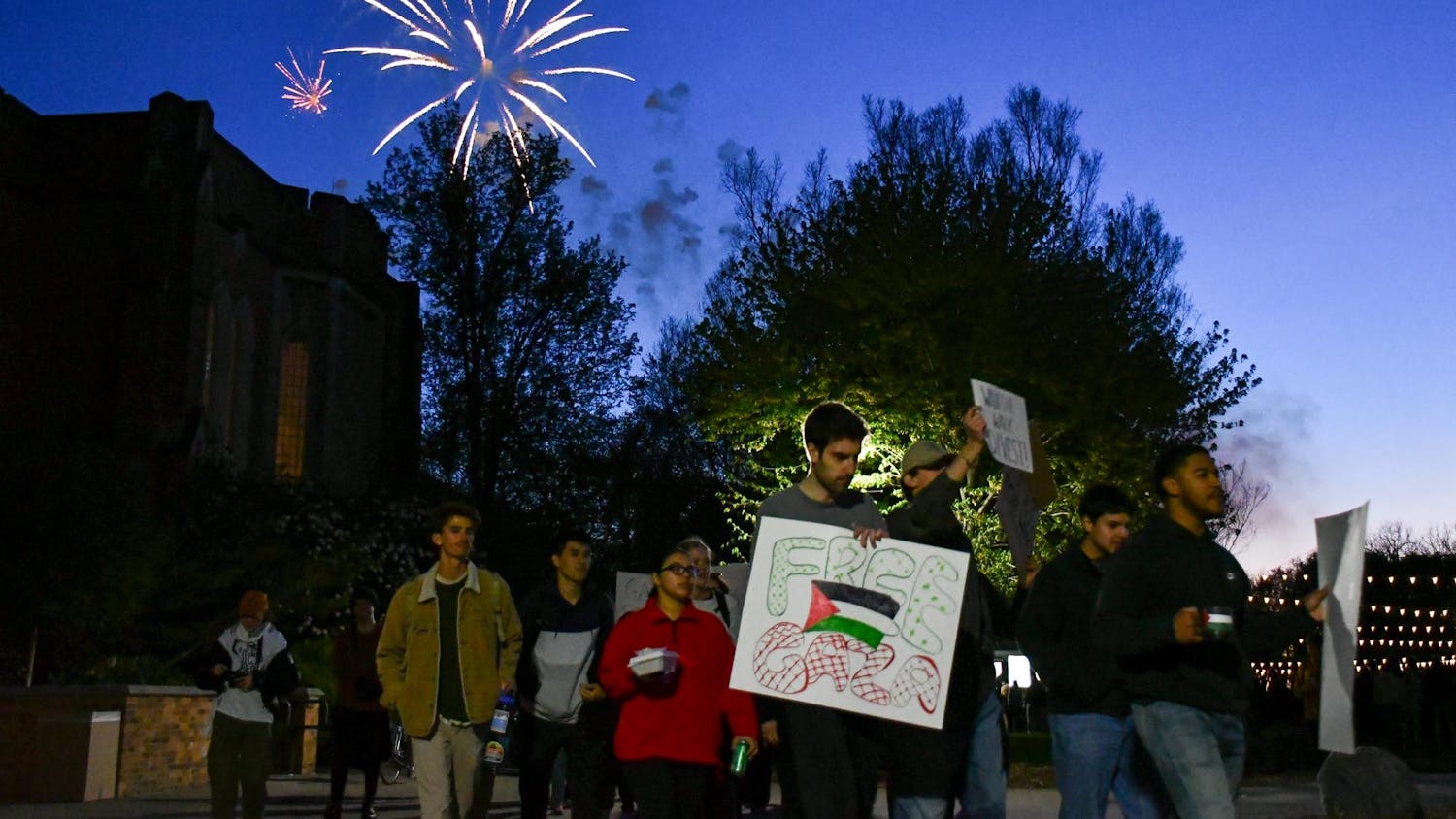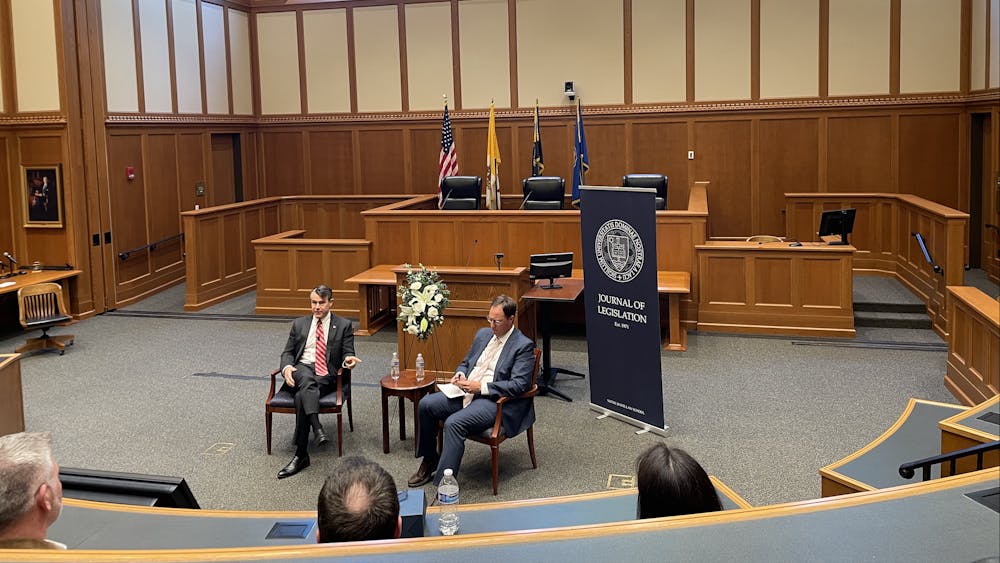The sounds of samulnori drums were heard throughout LaFortune Student Center on Sunday, ringing from the ballroom, which was transformed into a fair where three cultures came together to celebrate the languages, cultures and diversity at Notre Dame. The language programs of the department of East Asian languages and cultures held their fifth annual "Celebrate Asia!" event to celebrate the unique cultures of China, Japan and Korea.
"Celebrate Asia!" is sponsored by the department of East Asian languages and cultures and the Liu Institute for Asia and Asian Studies.
Students got their creative juices flowing by hand-designing Korean fans called “buchaes” and practicing calligraphy in Chinese, Japanese or Korean. Some got competitive in “wuzi qi,” a traditional Chinese board game that resembles Connect Four. Others tested their motor skills by playing “ti jianzi,” a game that involves keeping a weighted shuttlecock in the airborne using their feet.
Yongping Zhu, associate professor and Chinese program coordinator, highlighted the importance of this event.
“We believe that language and culture cannot be separated,” he said. “Students will learn the languages better once they know the cultures. … Through this event, students will not only learn the culture in their target languages but also other related East Asian cultures.”
As for next year, Zhu said he already had some ideas to further improve the event. He said each program replaces an activity or two each year to meet the students’ interests. While most booths exhibit traditional cultures of the countries, the planning committee is looking to increase the number of activities that better represent modern East Asia.
Professional specialist Noriko Hanabusa said the event could make the Japanese program and Japanese culture more visible on campus.
“Unlike Chinese and Korean, [the] Japanese program is facing serious challenges: We have very few native speakers or heritage speakers of Japanese on campus and in the South Bend community,” Hanabusa said. “ … So, it is difficult for students taking Japanese to use the language in the real-life context. We are actively planning to have extracurricular activities and events to get [these speakers together, and] ‘Celebrate Asia!’ is one of them.
“The focus in our language classes is practicing the skills of languages, and we do not have enough time to talk about various cultural aspects. The event could introduce some unique culture on hands-on activities, which I think is very important.”
Hanabusa said the faculty members of all three programs spent a lot of time planning to make "Celebrate Asia!" an annual occasion and that it is a testament of the three programs’ ability to communicate.
In attendance were language students, international students, Asian Americans and students who just wanted to learn about the East Asian cultures. Students in a Chinese, Japanese or Korean language class were required to attend this class as part of the course requirements. A pamphlet listing all the activities and a brief description of each was provided to every participant. Students received stamps after visiting each booth, and eight stamps were required to receive the credit for attending the event.
A number of participants brought friends outside of the language classes; some came for the culture, activities and fun, others came for the food.
The event offered East Asian food not found in the dining halls. The Chinese program ordered entrees from JW Chen’s. The Japanese program provided a variety of sushi from the local Martin’s Supermarket. The Korean program offered sweet rice cake desserts from nearby Oriental Market.
Qinfeng Wu, an international graduate student, said his favorite aspect of the event was the ability to introduce so many parts of the Asian culture in a fun way and in a short amount of time.
“It’s like a crash course, very efficient in raising people’s interests in Asia,” Wu said.
Wu noted some of the limitations of such an event. He said the activities represented only very small portion of the Chinese culture but also said that the fun activities kept the students engaged and is a good complement to the classroom lectures.
Dennis Zheng, a student enrolled in second-year Chinese, said the event did a good job not only in representing and highlighting his culture, but also in showcasing the cultures of other East Asian countries.
“As a Chinese American, I also caught a glimpse of how the Korean and the Japanese cultures engaged in recreational activities as compared to the Chinese,” Zheng said. “ … This event highlights expression of culture through recreational activities.”













